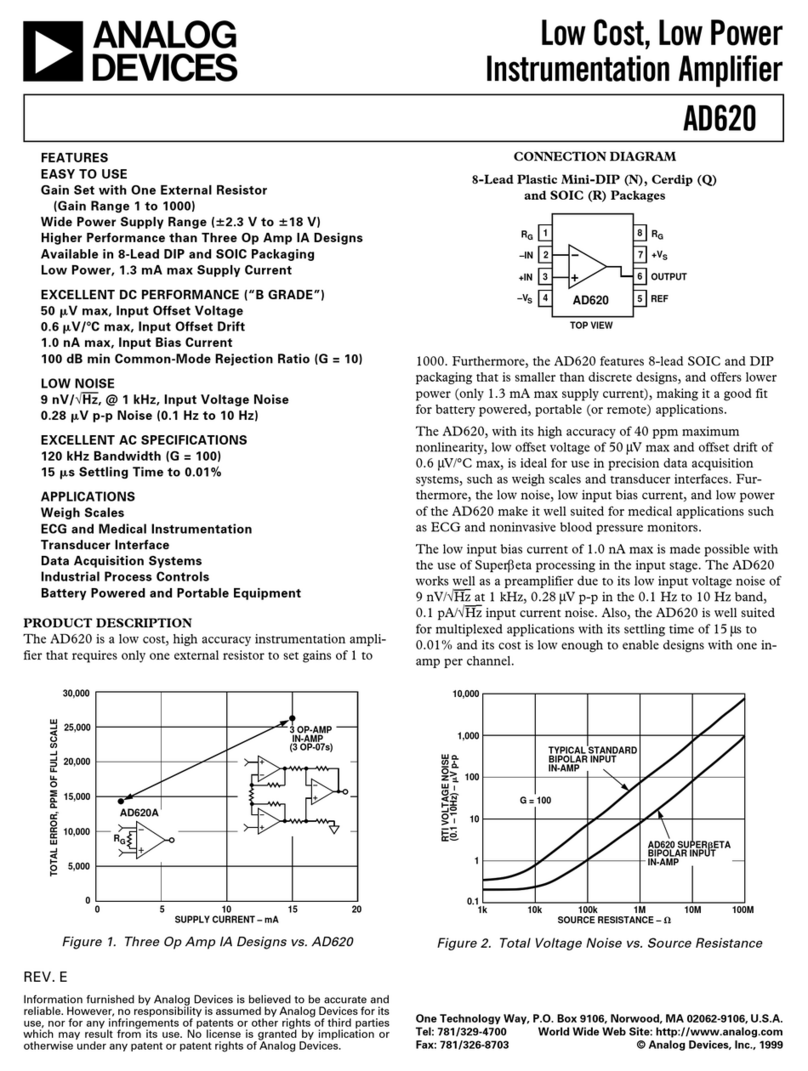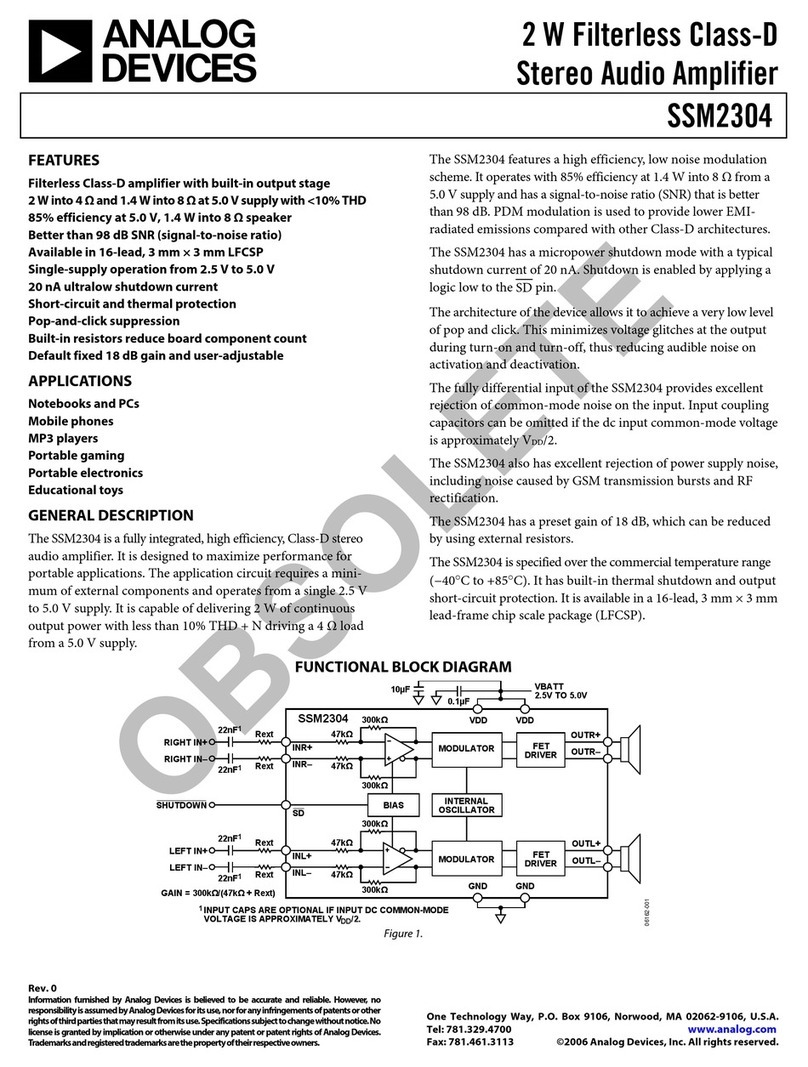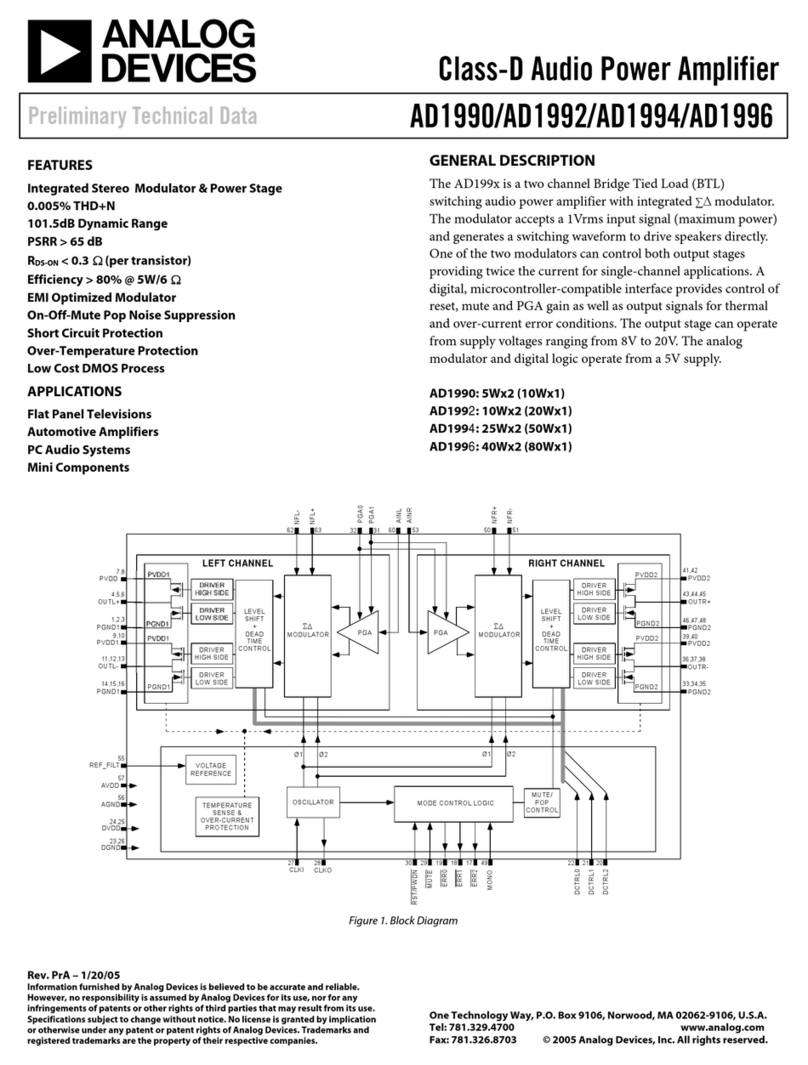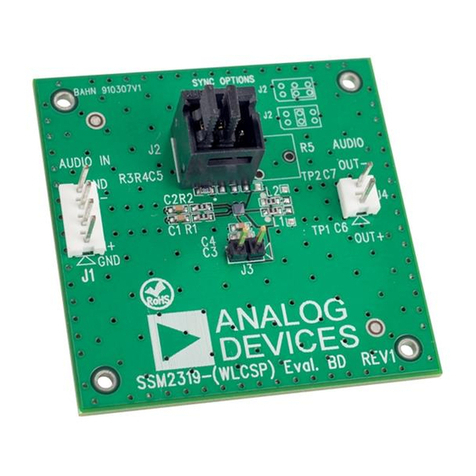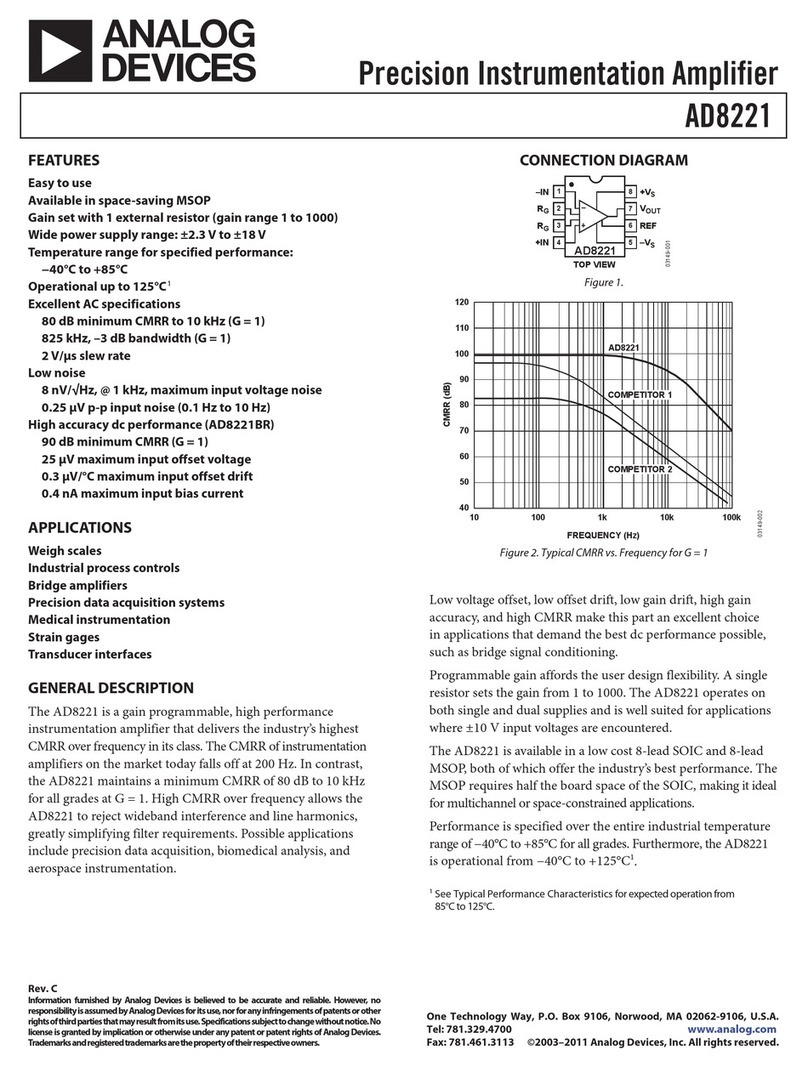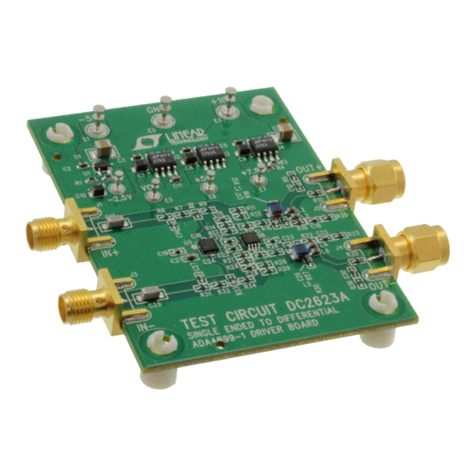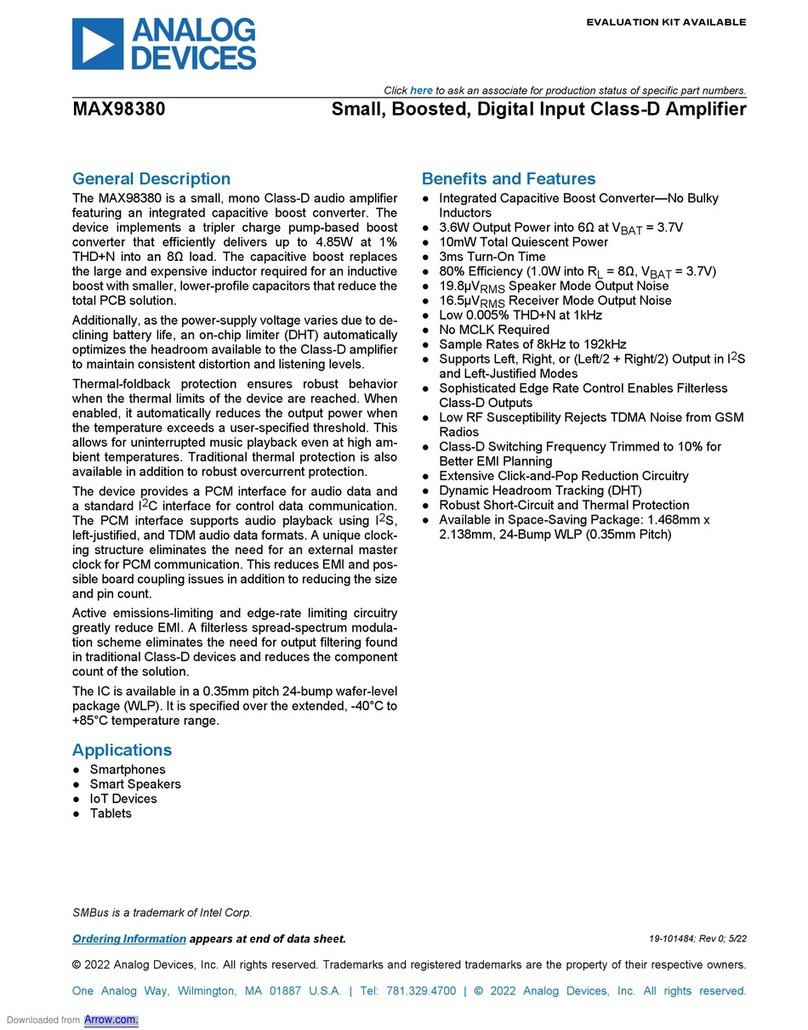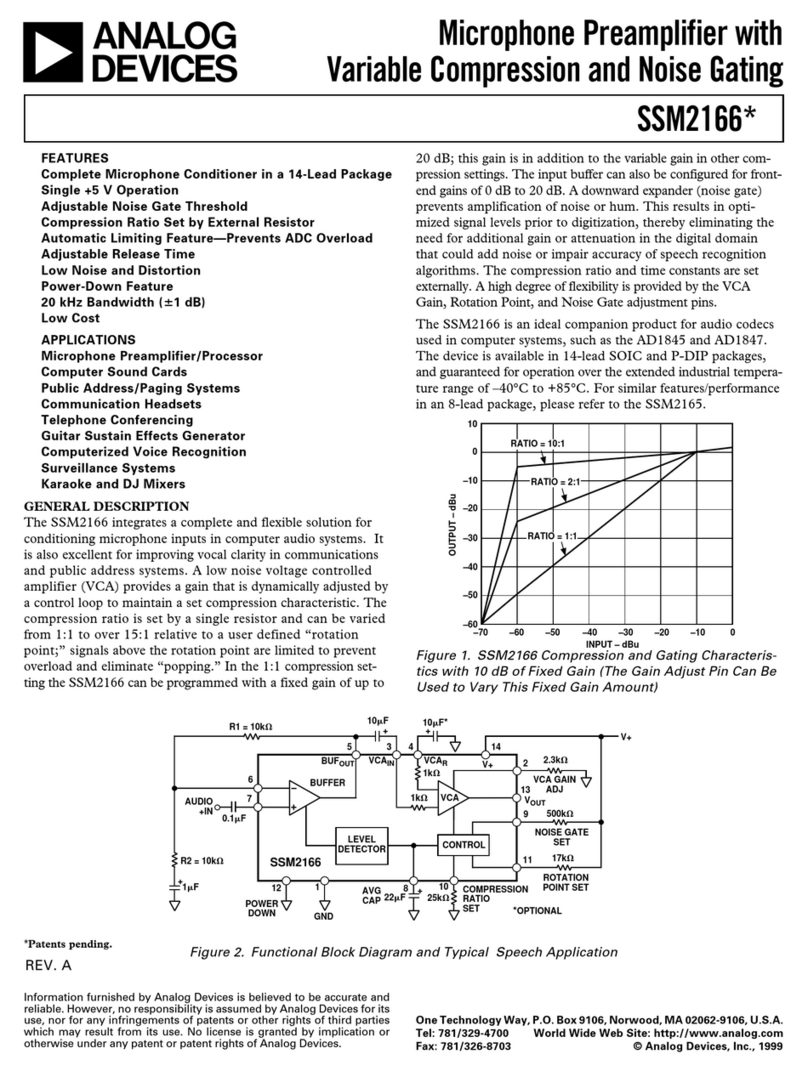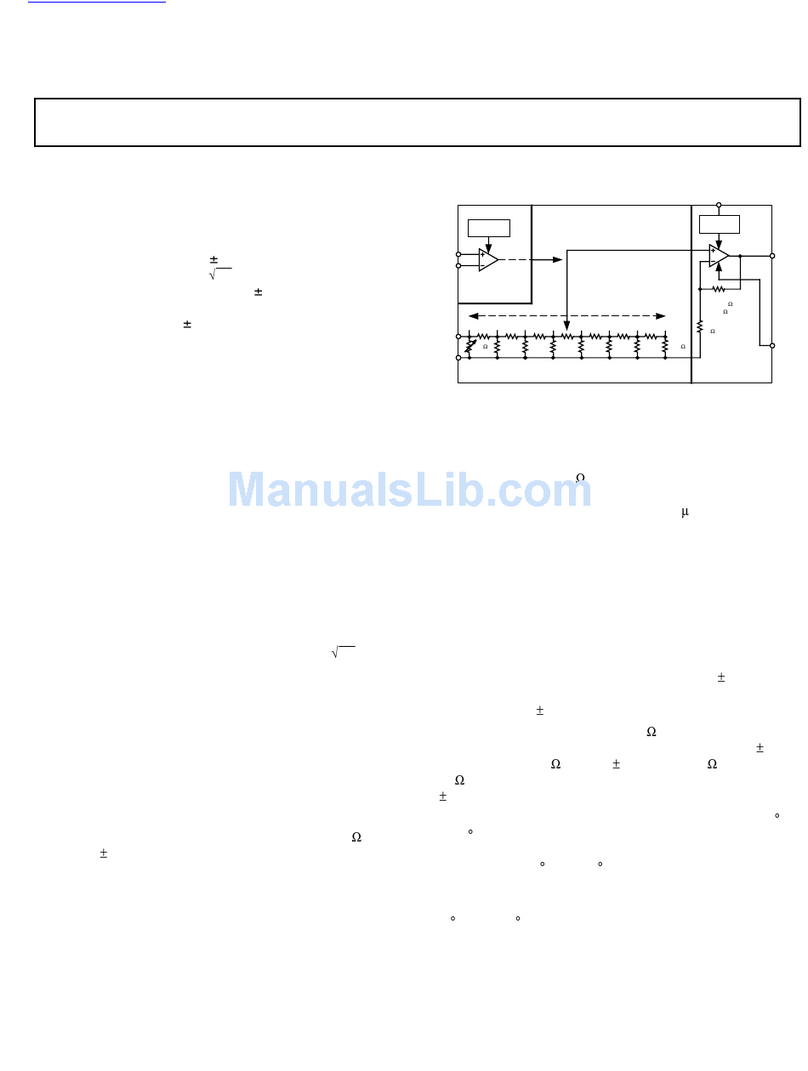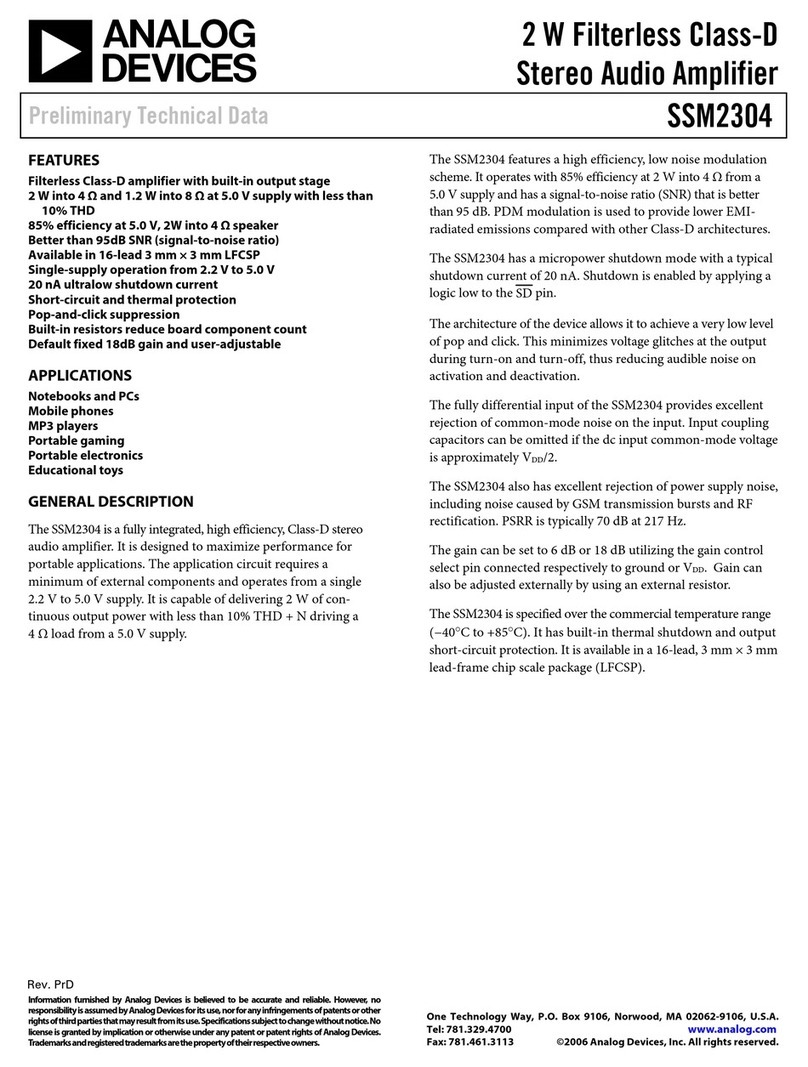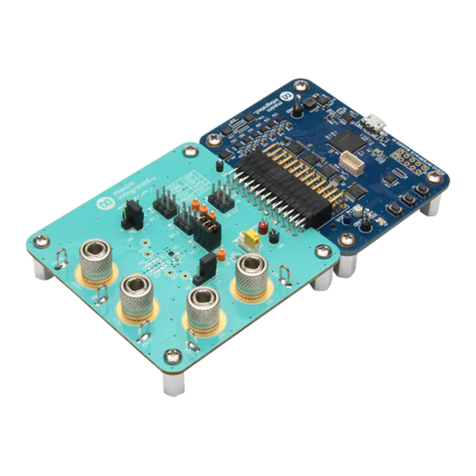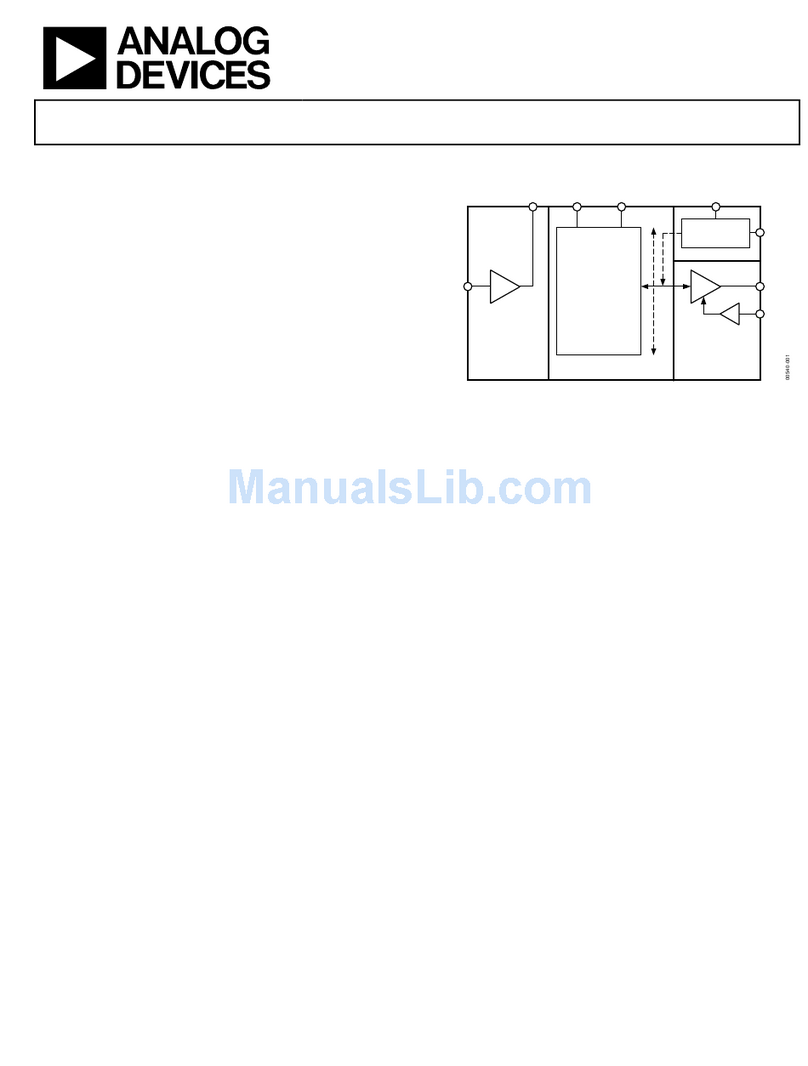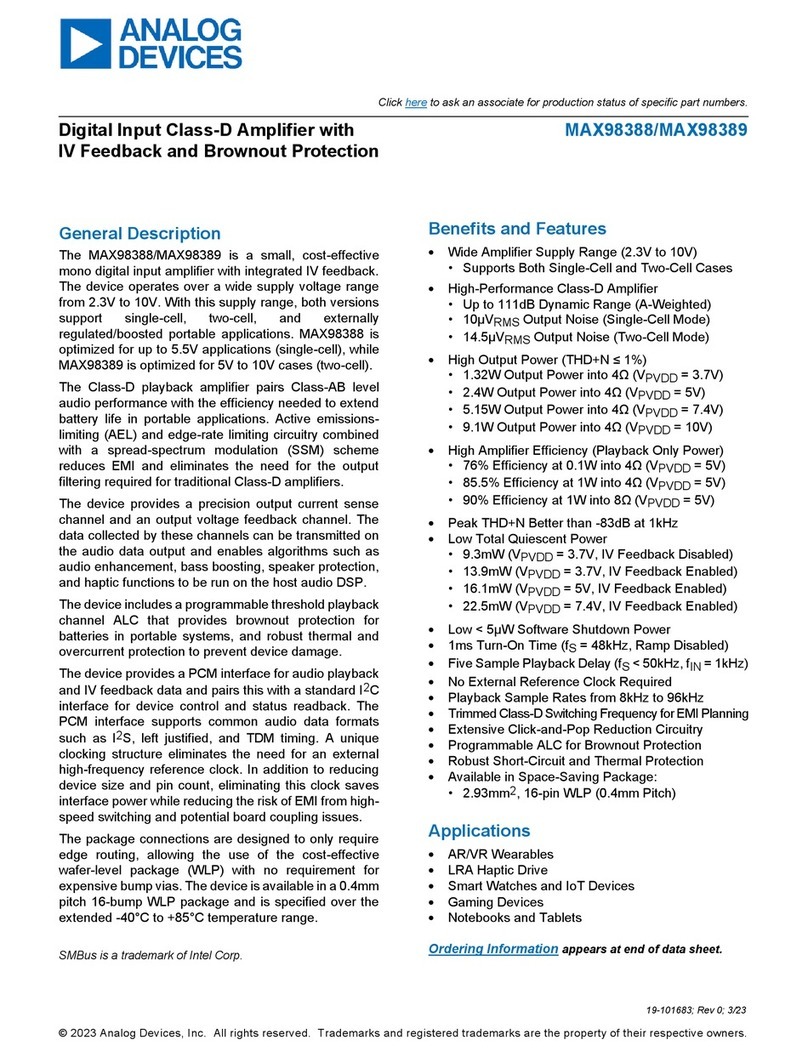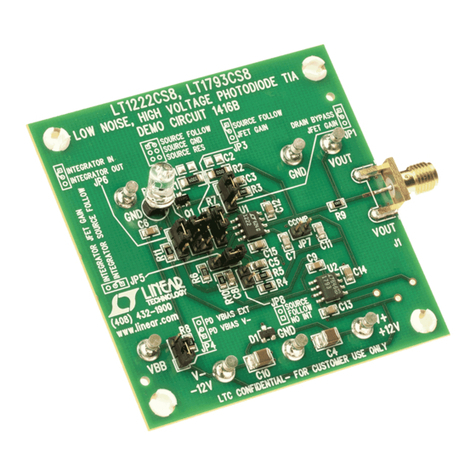
REV. D
AD600/AD602
–6–
THEORY OF OPERATION
The AD600 and AD602 have the same general design and
features. They comprise two fixed gain amplifiers, each pre-
ceded by a voltage-controlled attenuator of 0 dB to 42.14 dB
with independent control interfaces, each having a scaling factor
of 32 dB per volt. The gain of each amplifier in the AD600 is
laser trimmed to 41.07 dB (⫻113), providing a control range
of –1.07 dB to +41.07 dB (0 dB to +40 dB with overlap). The
AD602 amplifiers have a gain of 31.07 dB (⫻35.8) and pro-
vide an overall gain of –11.07 dB to +31.07 dB (–10 dB to
+30 dB with overlap).
The advantage of this topology is that the amplifier can use
negative feedback to increase the accuracy of its gain. Also, since
the amplifier never has to handle large signals at its input, the
distortion can be very low. Another feature of this approach is
that the small-signal gain and phase response, and thus the
pulse response, are essentially independent of gain.
The following describes the AD600. Figure 1 is a simplified
schematic of one channel. The input attenuator is a seven-section
R-2R ladder network, using untrimmed resistors of nominally
R = 62.5 Ω, which results in a characteristic resistance of
125 Ω±20%. A shunt resistor is included at the input and laser
trimmed to establish a more exact input resistance of 100 Ω±2%,
which ensures accurate operation (gain and HP corner frequency)
when used in conjunction with external resistors or capacitors.
PRECISION PASSIVE
INPUT ATTENUATOR GATING
INTERFACE
SCALING
REFERENCE
GAT1
A1OP
A1CM
C1HI
C1LO
A1HI
A1LO
VG
R-2R LADDER NETWORK
GAIN CONTROL
INTERFACE RF2
2.24k(AD600)
694(AD602)
RF1
20
FIXED-GAIN
AMPLIFIER
41.07dB(AD600)
31.07(AD602)
500
0dB
–6.02dB
–12.04dB
–18.06dB
–22.08dB
–30.1dB
–36.12dB
–42.14dB
62.5
Figure 1. Simplified Block Diagram of Single Channel of
the AD600 and AD602
The nominal maximum signal at input A1HI is 1 V rms (±1.4 V
peak) when using the recommended ±5 V supplies, although
operation to ±2 V peak is permissible with some increase in HF
distortion and feedthrough. Each attenuator is provided with a
separate signal “LO” connection for use in rejecting common
mode, the voltage between input and output grounds. Circuitry
is included to provide rejection of up to ±100 mV.
The signal applied at the input of the ladder network is attenu-
ated by 6.02 dB by each section; thus, the attenuation to each of
the taps is progressively 0, 6.02, 12.04, 18.06, 24.08, 30.1, 36.12,
and 42.14 dB. A unique circuit technique is employed to interpo-
late between these tap points, indicated by the “slider” in
Figure 1, providing continuous attenuation from 0 dB to 42.14 dB.
To understand the AD600, it helps to think in terms of a
mechanical means for moving this slider from left to right; in
fact, it is voltage controlled. The details of the control interface
are discussed later. Note that the gain is exactly determined
at all times, and a linear decibel relationship is automatically
guaranteed between the gain and the control parameter that
determines the position of the slider. In practice, the gain
deviates from the ideal law by about ±0.2 dB peak (see Figure 6).
Note that the signal inputs are not fully differential. A1LO,
A1CM (for CH1), A2LO, and A2CM (for CH2) provide
separate access to the input and output grounds. This recog-
nizes that even when using a ground plane, small differences
arise in the voltages at these nodes. It is important that A1LO
and A2LO be connected directly to the input ground(s).
Significant impedance in these connections reduces the gain
accuracy. A1CM and A2CM should be connected to the load
ground(s).
Noise Performance
An important reason for using this approach is the superior
noise performance that can be achieved. The nominal resistance
seen at the inner tap points of the attenuator is 41.7 Ω(one third
of 125 Ω), which, at 27°C, exhibits a Johnson noise spectral den-
sity (NSD) of 0.84 nV/√Hz (that is, √4kTR), a large fraction of
the total input noise. The first stage of the amplifier contributes
another 1.12 nV/√Hz, for a total input noise of 1.4 nV/√Hz.
The noise at the 0 dB tap depends on whether the input is
short-circuited or open-circuited. When shorted, the minimum
NSD of 1.12 nV/√Hz is achieved. When open, the resistance
of 100 Ωat the first tap generates 1.29 nV/√Hz, so the noise
increases to a total of 1.71 nV/√Hz. This last calculation would
be important if the AD600 were preceded, for example, by a
900 Ωresistor to allow operation from inputs up to ±10 V rms.
However, in most cases the low impedance of the source
limits the maximum noise resistance.
It is apparent from the foregoing that it is essential to use a low
resistance in the design of the ladder network to achieve low
noise. In some applications this may be inconvenient, requiring
the use of an external buffer or preamplifier. However, very few
amplifiers combine the needed low noise with low distortion at
maximum input levels, and the power consumption required to
achieve this performance is quite high (due to the need to maintain
very low resistance values while also coping with large inputs).
On the other hand, there is little value in providing a buffer
with high input impedance since the usual reason for this—
the minimization of loading of a high resistance source—is not
compatible with low noise.
Apart from the small variations just mentioned, the signal-to-
noise (S/N) ratio at the output is essentially independent of the
attenuator setting, since the maximum undistorted output is
1Vrms and the NSD at the output of the AD600 is fixed at
113 ⫻1.4 nV/√Hz, or 158 nV/√Hz. Thus, in a 1 MHz band-
width, the output S/N ratio would be 76 dB. The input NSD
of the AD600 and AD602 are the same, but because of the
10 dB lower gain in the AD602’s fixed amplifier, its output S/N
ratio is 10 dB better, or 86 dB in a 1 MHz bandwidth.
